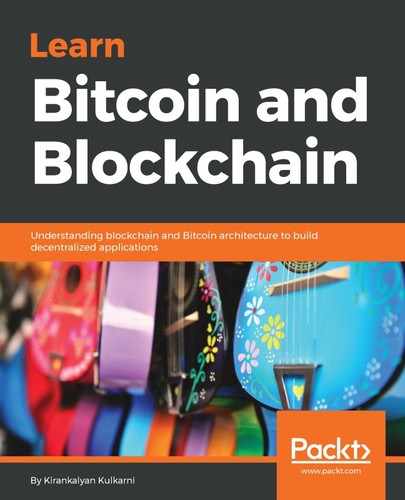After having talked about what decentralization is and how we achieve decentralization, let's now look at what can really be decentralized. It is very exciting to know that many things in the real world can be brought onto a decentralized blockchain platform:

Now we will look into the things that can be decentralized in detail as shown in the preceding diagram:
- Name Mapping: Anything that is purely digital can be decentralized. The first example in this category is Name Mapping. Namecoin is a good example where human-readable names are mapped with addresses. Different participants can enter names as values, update these values, and blockchain can be used to maintain the current state of that value.
- Storage: This category is another classic example and a business case to use decentralization. The most important and critical requirement of any storage solution is data availability, avoidance of a single point of failure, data replication, and automatic backup. All these can be handled very well by the decentralized storage solution that uses a secured blockchain solution. Storage or StorJ is an open source cloud storage platform, which uses blockchain for encrypted and distributed object storage.
- Lotteries: By using the decentralized blockchain solution, payment and payout can be denominated in the currency of blockchain itself. This helps in making it easy to have the lottery use a random number generation. SatoshiDice is one such example of a lottery that uses the decentralized blockchain solution.
- Generate Random Nos: Next is random number generation. Bitcoin can be used as a beacon to provide unpredictable and publicly verifiable yet convincing random numbers, which means that the output is unknown at the time the beacon starts. Yet everyone can verify that the output is close to uniform after the beacon terminates. This is a far more reliable method that generates such random numbers.
- Pay for Proof of Work: The next and the last in this category for us to understand is paying for PoW. It complements the concept of storage, but it's mainly aimed at incentivizing the PoW. It aims at creating competition among the verifiable nodes to arrive at a consensus. Various nodes involved in validating the transactions that are a part of the blocks in the blockchain require showing that they have invested significant computing power in performing the verification. In a classic example of Bitcoin, miners compete to process a block of transactions and add it to the blockchain. They do this by joining enough random guesses on their computer to come up with an answer within the parameters established by the Bitcoin program.
